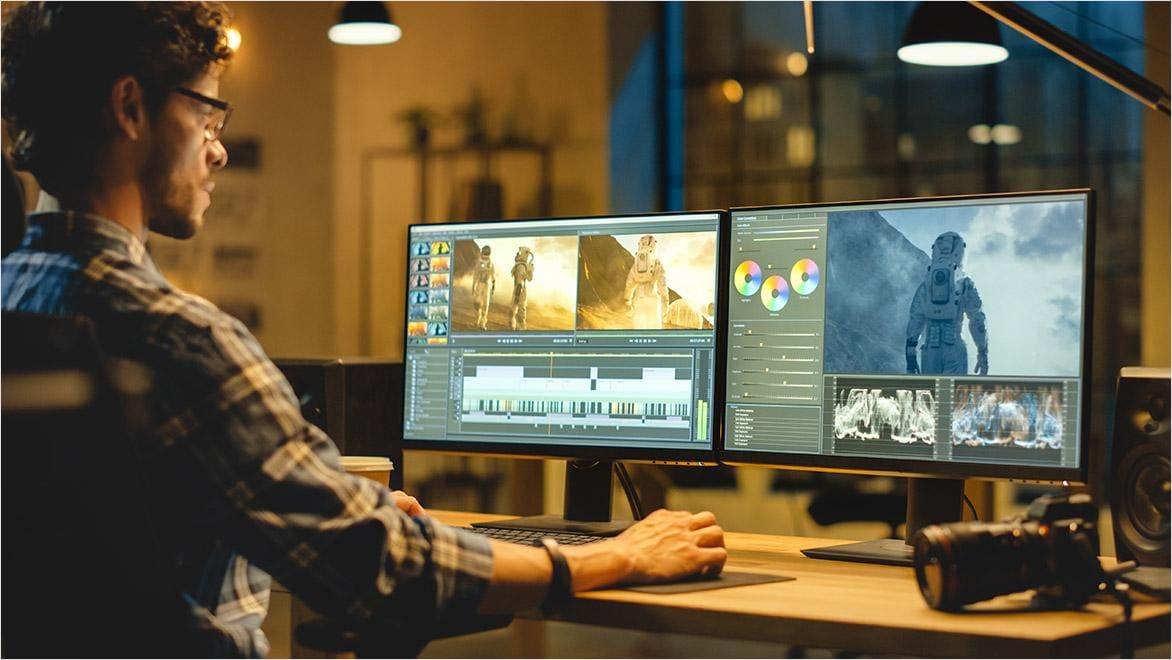Television production involves a multi-stage process starting with the conceptualisation and pitching of ideas, followed by pre-production tasks like scriptwriting, casting and budgeting. The preparation and planning phase encompasses location scouting, costume and set design, and technical planning.
During the production phase, actual filming occurs under the direction of the filmmaker. Post-production involves video and sound editing, colour grading, and the addition of visual effects or animation (US site).
The finalised content undergoes quality control before distribution through various channels, such as streaming services and TV networks.
What can post-production software do? How is it used and why?
Post-production software is used in television and film production (US site) to refine raw video footage and create a polished final product. Video editing tools enable precise arrangement of footage for storytelling and pacing and audio editing enhances dialogue clarity and adds sound effects or music for an immersive experience. Colour grading adjusts visual aesthetics for consistency and mood. Visual effects and animation tools add realistic CG characters, environments and effects (that would have been impractical or impossible to shoot) to live-action footage. Transcoding and compression optimise content for different platforms. Quality control ensures a polished, error-free result, and collaboration tools aid efficient teamwork.
How is TV production software used for visual effects and animation?
A variety of post-production software is used to create visual effects and animation for TV. 3D modelling and simulation tools are used to create realistic CG elements and effects that are then integrated with live-action footage through tasks like compositing (US site). Animation tools aid in bringing CG characters to life, using keyframing, character rigging and motion capture. Rendering capabilities allow for adjustments in lighting and shading in scenes. Collaboration tools for post-production also ensure smooth communication and interoperability among all stages of the production pipeline.









